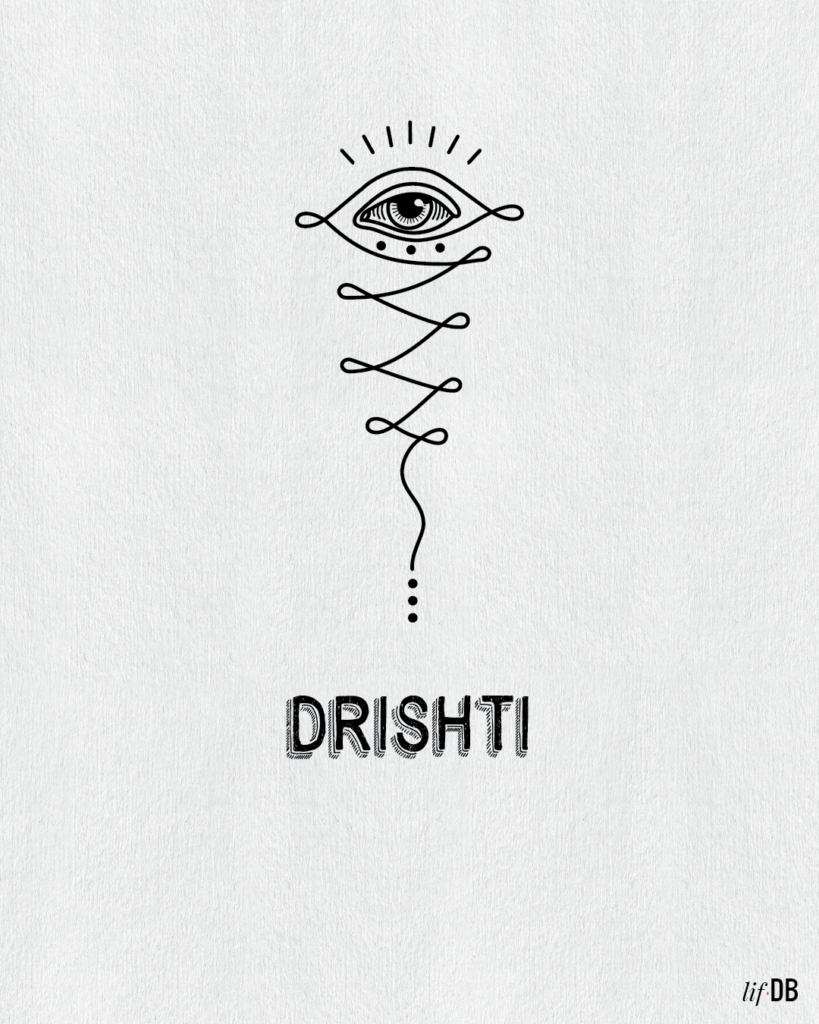Drishti means gaze in Sanskrit. Modern yoga pioneers such as Iyengar and Pattabhi Jois outlined a specific drishti for certain poses. The gaze is usually a body part, whether it’s the tip of the nose, our third eye, toes, hands, or the navel.
By having a point of vision, we are able to concentrate, find better alignment, deepen the pose, and focus internally. You can try gazing at the navel during downward facing dog, tip of the nose during tree pose, or the third eye during a backbend.
Having a soft and steady gaze during practice relaxes the eyes, softens the face, releases tension. Stress manifests in our eyes, from eye twitching to blurry vision. And one way to combat stress is to give our eyes direction and relieve them of restlessness.
Even with the eyes closed, we can guide the gaze. For example, during child’s pose, close your eyes and look towards the tip of the nose.
Incorporating the drishti in your yoga practice adds another layer of concentration, as you unite your breath, movement, and your gaze.
See what happens when you apply the concept of drishti either during yoga class or even when you feel stressed or frustrated. This technique, along with steadying the breath calms the mind.

